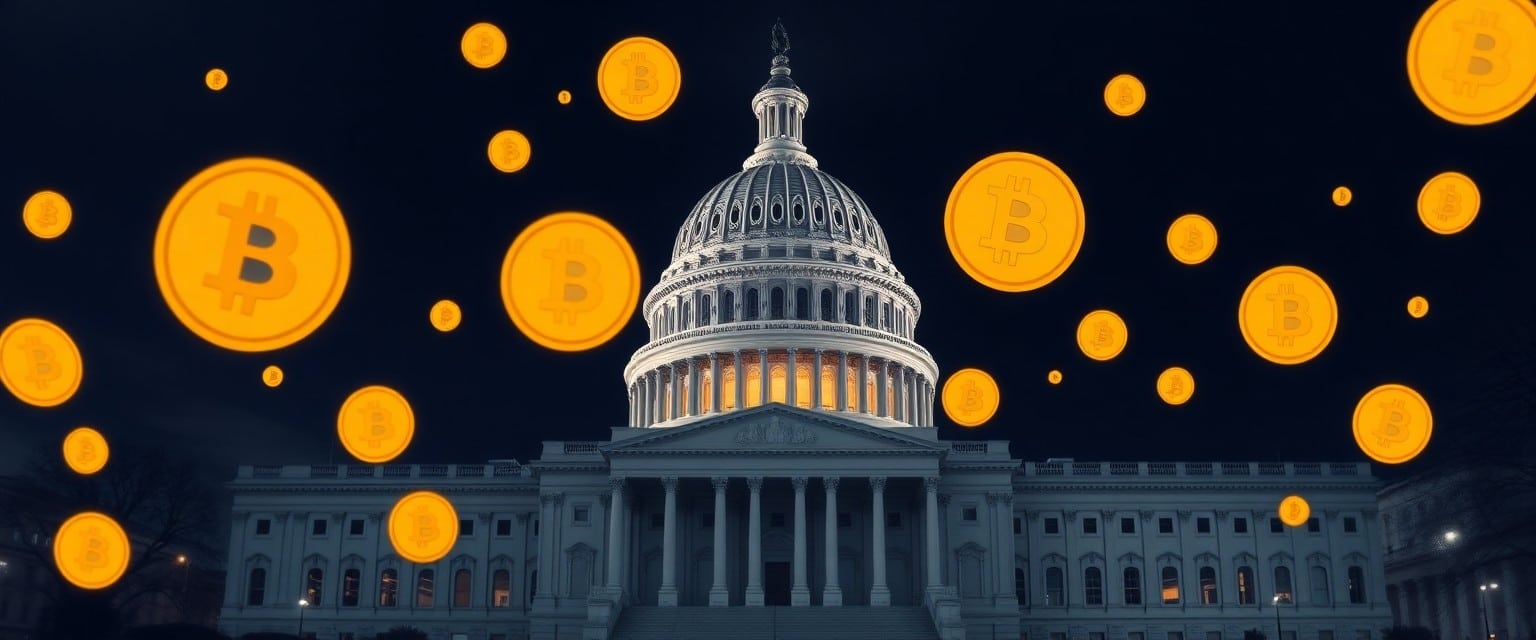$120K marks an unprecedented milestone for Bitcoin, capturing intense attention across financial markets and media outlets like the FT’s recent coverage. As you observe this rally, understanding the impact of new U.S. legislation dubbed “crypto week,” growing institutional interest, and shifting market sentiment is important to grasp the forces behind the surge. This analysis will help you evaluate whether this momentum can sustain amidst regulatory dynamics and speculative enthusiasm, providing a clear lens on what’s fueling Bitcoin’s leap to a bitcoin $120,000 valuation.
The Legislative Landscape: U.S. Policies Shaping the Crypto Environment
U.S. policy developments have played a pivotal role in driving Bitcoin’s meteoric rise to $120,000. Regulatory clarity emerging from recent actions encourages both institutional and retail participation. Meanwhile, lawmakers juggle balancing innovation with consumer protection, creating an ecosystem where compliance frameworks reassure investors without stifling growth. The evolving legislative backdrop directly impacts liquidity and market sentiment, making it impossible to ignore how government signals have shaped your ability to confidently engage with crypto assets at these record valuations.
Key Legislative Developments During “Crypto Week”
“Crypto Week” saw a series of significant regulatory moves, including the SEC’s approval of multiple Bitcoin ETFs and bipartisan support for clearer crypto tax guidelines. The President’s Executive Order on digital assets underscored a national strategy emphasizing responsible innovation. These developments reflect a growing consensus between regulators and lawmakers to formalize the industry, easing uncertainties that had previously clouded Bitcoin’s institutional adoption and fueling the surge to $120,000.
Implications of Regulatory Clarity on Investor Confidence
Clearer regulations have boosted your confidence as an investor, signaling a lower risk of disruptive crackdowns or policy reversals. With frameworks now better defined, institutional players feel more secure allocating capital to Bitcoin, directly contributing to increased demand and price appreciation. This environment reduces market volatility linked to regulatory rumors, enabling more strategic, long-term investment positions that support sustaining the rally.

Institutional Interest: The Shift Toward Mainstream Adoption
The surge to bitcoin $120,000 reflects a significant pivot as institutional investors increasingly blend crypto into traditional portfolios. Firms like BlackRock and Fidelity have expanded their crypto offerings, while hedge funds and pension plans boost allocations, signaling a strategic embrace that validates bitcoin beyond retail hype. This influx intensifies liquidity and market depth, helping bitcoin transition from speculative asset to a key component of diversified investment strategies, reinforcing its role in the evolving financial ecosystem.
Major Players Entering the Bitcoin Market
BlackRock’s recent filing for a Bitcoin ETF captured headlines, marking a watershed moment for institutional entry. Similarly, heavyweights like Tesla and MicroStrategy have publicly increased their bitcoin holdings, while JPMorgan’s crypto unit facilitates billions in transactions monthly. These endorsements from established financial giants embed bitcoin firmly within mainstream finance and drive a wave of confidence among other institutional actors weighing entry.
The Role of Institutional Investments in Price Dynamics
Institutional capital inflows have introduced new layers of price support and volatility management for bitcoin. Large-scale purchases from funds and corporations can sharply influence short-term price jumps, yet their longer-term strategies often reduce erratic swings by fostering stronger liquidity and wider market participation.
Institutional investors often employ sophisticated hedging and risk management techniques, which contrast with the retail market’s more reactive nature. This professional approach tends to create smoother price movements and establish clear valuation benchmarks. The sheer volume of institutional transactions also helps bitcoin withstand external shocks better, as deeper markets absorb large orders without triggering flash crashes. Additionally, these investors typically hold bitcoin for extended horizons, promoting stability rather than rapid sell-offs.
Market Sentiment: Analyzing the Public Perception of Bitcoin
Public perception of Bitcoin plays a pivotal role in sustaining its historic run to $120,000. Positive narratives fueled by mainstream media coverage, including the Financial Times’ milestone reporting, have bolstered confidence among retail and institutional investors alike. Your exposure to bullish sentiment often magnifies during crypto “weeks” when U.S. legislation signals regulatory clarity, prompting waves of enthusiasm. Yet, this optimism is tempered by skepticism among traditional financial circles, making market sentiment a delicate balance between excitement and caution as you navigate Bitcoin’s volatile trajectory.
The Social Media Impact on Bitcoin’s Popularity
Social media platforms amplify Bitcoin’s momentum, with influencers and prominent figures driving viral buzz that motivates buying sprees. Twitter threads, Reddit communities like r/Bitcoin, and even TikTok trends repeatedly push Bitcoin into broader public consciousness, shaping perceptions in real-time. When you see tweets from key investors or celebrities endorsing Bitcoin near record highs, that digital word-of-mouth can heighten demand rapidly, sometimes contributing to sharp price spikes by engaging younger, tech-savvy audiences who are often at the forefront of crypto adoption.
Behavioral Economics: FOMO and Its Effect on Prices
Fear of missing out (FOMO) deeply impacts Bitcoin’s price, especially at its $120,000 peak, as traders scramble to enter the market inspired by soaring values and media hype. You might notice how sudden surges in buying volume often follow major headlines or legislative developments, driven not solely by fundamentals but by emotional reactions. This psychological trigger can push prices beyond intrinsic value temporarily, creating volatility that benefits some while risking losses for latecomers caught in euphoria.
Diving deeper, FOMO-driven trading can be quantified through volume spikes during news cycles, such as the recent U.S. “crypto week,” where regulatory clarity spurred unprecedented activity. This psychological momentum often leads to rapid price accelerations, followed by sharp corrections when enthusiasm wanes or profit-taking occurs. You must weigh this behavior carefully, as FOMO can distort market signals and fuel unsustainable rallies. Historical precedents like the 2017 Bitcoin bull run illustrate how powerful these emotions are in driving prices, often amplifying swings as retail investors rush to avoid missing gains.
The Financial Times Milestone: Contextualizing Bitcoin’s Current Value
The Financial Times recently marked Bitcoin’s surge to ~$120,000 as a key milestone, emphasizing how unprecedented regulatory clarity during the U.S. “crypto week” and soaring institutional investments underpin this rally. FT highlighted the expanding acceptance from traditional finance players, with firms like BlackRock and Fidelity intensifying crypto allocations. This media recognition not only reflects Bitcoin’s growing legitimacy but also feeds into positive market sentiment, confirming that the $120K level represents more than just a speculative peak—it signals a new valuation benchmark shaped by macroeconomic and legislative shifts.
Historical Comparisons to Previous Market Peaks
Bitcoin’s $120K surge echoes elements from past bull runs, such as the 2017 peak near $20,000 and the 2021 high around $64,000. Unlike those, this rally benefits from broadened institutional backing and clearer regulatory guidance, differentiating it from earlier hype-driven cycles. The current climb includes both increased adoption and positive market sentiment driven by U.S. legislation, suggesting a more robust foundation, yet echoes of volatility remain from Bitcoin’s historical boom-and-bust patterns.
| Peak | Key Characteristics |
|---|---|
| 2017 (~$20,000) | Primarily retail-driven, limited institutional involvement, high volatility, regulatory uncertainty |
| 2021 (~$64,000) | Growing institutional interest, emergence of DeFi, initial U.S. regulations, heightened media attention |
| 2024 (~$120,000) | Strong institutional demand, clear U.S. crypto legislation (“crypto week”), widespread media validation (FT milestone), improved market infrastructure |
Investor Reactions to Recent Financial Media Coverage
Investors have responded energetically to the Financial Times’ coverage, with many viewing the FT’s endorsement as a vote of confidence in Bitcoin’s maturity. Retail and institutional traders alike are interpreting this media milestone as a signal of sustained legitimacy and market momentum, driving increased buy-ins. However, some cautious participants warn this level could invite profit-taking amid price exuberance, underscoring the tension between enthusiasm and risk in your portfolio decisions.

Assessing Longevity: Is the Current Rally a Bubble?
The surge to bitcoin $120,000 prompts you to consider if this rally is built on firm foundations or if it’s edging toward a bubble. While Reacting solely to price spikes can mislead, the interplay of U.S. regulatory shifts during “crypto week,” expanding institutional adoption, and evolving market sentiment suggests deeper momentum. Still, historical cycles warn that rapid gains often precede corrections, leaving you to weigh whether this peak reflects sustained value or speculative excess.
Key Indicators of Market Sustainability
You should track metrics like daily transaction volumes, on-chain activity, and institutional holdings to gauge if bitcoin’s rally can persist. For instance, the FT reported a surge in newly opened institutional accounts, aligning with increased regulatory clarity from recent U.S. legislation, which may help stabilize demand. Meanwhile, retail interest remains strong but volatile, with sentiment indices oscillating between fear and greed. The balance of these factors can reveal if demand expands broadly or remains concentrated, which influences the rally’s durability.
Expert Opinions on Future Price Trajectories
Diverse voices in finance paint contrasting futures for bitcoin near $120,000. Some analysts highlight that growing ETF approvals and global corporate treasuries diversifying into crypto underpin optimism. Others caution that valuations may overshoot fundamentals, pointing to precedent bubbles in crypto history. You’re advised to consider that despite institutional enthusiasm, regulatory uncertainties and macroeconomic headwinds could trigger volatility. This blend of bullish momentum and risk factors feeds a complex outlook among experts.
Further elaborating, experts like Cathie Wood of ARK Invest project bitcoin potentially surpassing $200,000 within the next few years due to increasing corporate adoption and inflation hedging. Conversely, critics such as Nouriel Roubini warn of speculative bubbles fueled by hype rather than tangible use cases, emphasizing regulatory crackdown risks. You’ll find that market reactions to upcoming U.S. legislative decisions and global macroeconomic indicators will likely determine which narrative prevails, keeping bitcoin’s path highly dynamic.
Final Words
With these considerations, you can better understand the forces behind bitcoin $120,000 and what they mean for your investment outlook. U.S. legislative clarity during “crypto week” has boosted confidence, while growing institutional interest provides strong foundational support. Market sentiment, shaped by news milestones like the FT’s coverage, reflects increasing mainstream acceptance. However, you should weigh these factors carefully, as the rally’s sustainability depends on ongoing regulatory developments and broader economic conditions. Staying informed helps you navigate the evolving landscape and make decisions grounded in a clear view of bitcoin’s potential and risks.
Frequently Asked Questions
What factors are driving Bitcoin’s price to $120,000?
Bitcoin’s surge to $120,000 is attributed to increased institutional investments, favorable regulatory developments, and macroeconomic factors such as inflation and currency devaluation concerns. Notably, the U.S. government’s pro-crypto stance and proposed legislation like the Genius Act and Clarity Act have bolstered investor confidence. Source
How have institutional investments impacted Bitcoin’s price?
Institutional investments have significantly influenced Bitcoin’s price, with spot Bitcoin ETFs recording record inflows. For instance, BlackRock’s Bitcoin ETF has amassed nearly $90 billion in assets, contributing to increased demand and price appreciation. Source
What is the Genius Act, and how does it affect Bitcoin?
The Genius Act is proposed legislation aimed at establishing federal regulations for stablecoins. Its progress through the U.S. Congress has been viewed positively by investors, as it suggests a more structured and transparent legal framework for digital assets, potentially enhancing Bitcoin’s legitimacy. Source
How do macroeconomic factors influence Bitcoin’s price?
Macroeconomic factors such as inflation concerns and a weakening U.S. dollar have driven investors toward decentralized assets like Bitcoin. The Federal Reserve’s projected interest rate cuts have further fueled risk-on sentiment, making Bitcoin an attractive alternative investment. Source
What are the technical indicators suggesting for Bitcoin’s future price?
Technical indicators suggest that Bitcoin may face short-term consolidation within the $120,000–$130,000 range due to factors like dealer gamma hedging and a strengthening U.S. dollar. However, signs of hidden accumulation and bullish sentiment indicate potential for further price appreciation beyond $130,000. Source
How Bitcoin Reached $120K: Understanding the Surge
Learn the key factors behind Bitcoin’s surge to $120K, including institutional investments, regulatory developments, and macroeconomic factors.
Step 1: Recognize the Role of Institutional Investments
Institutional investments have been a major driver of Bitcoin’s price surge, with companies like BlackRock and PayPal increasing their exposure to Bitcoin.
Step 2: Understand Regulatory Developments
Regulatory clarity in the U.S. and other countries has provided confidence to investors, with favorable crypto bills such as the Genius Act and Clarity Act supporting Bitcoin’s growth.
Step 3: Consider Macroeconomic Factors
Macroeconomic factors, including inflation fears and the decline of traditional currencies, have caused more investors to flock to Bitcoin as a store of value.
Step 4: Watch Bitcoin ETF Inflows
Bitcoin ETFs have seen record inflows, especially after major firms like BlackRock introduced their own ETFs, creating more liquidity and price pressure.
Step 5: Stay Updated with Market Sentiment
Investor sentiment plays a critical role in Bitcoin’s price movements. Positive sentiment driven by media, endorsements from public figures, and Bitcoin’s use in finance pushes the price upward.
Required Tools:
- Cryptocurrency Exchanges
- Bitcoin ETFs
- Regulatory News
- Market Sentiment
Time Required: 2 hours
Estimated Cost: $0

